Scaling a Multi-Lingual Web Platform with Strapi, from 1 to 1000+ Pages
Introduction
In the fast-paced digital world, building scalable, flexible, and author-friendly web solutions is critical. For building over 1000+ authorable web pages for an audience as diverse as ours, we turned to Strapi V4, a headless CMS that could make content management streamlined for us and helped us reach localization and customization at scale.
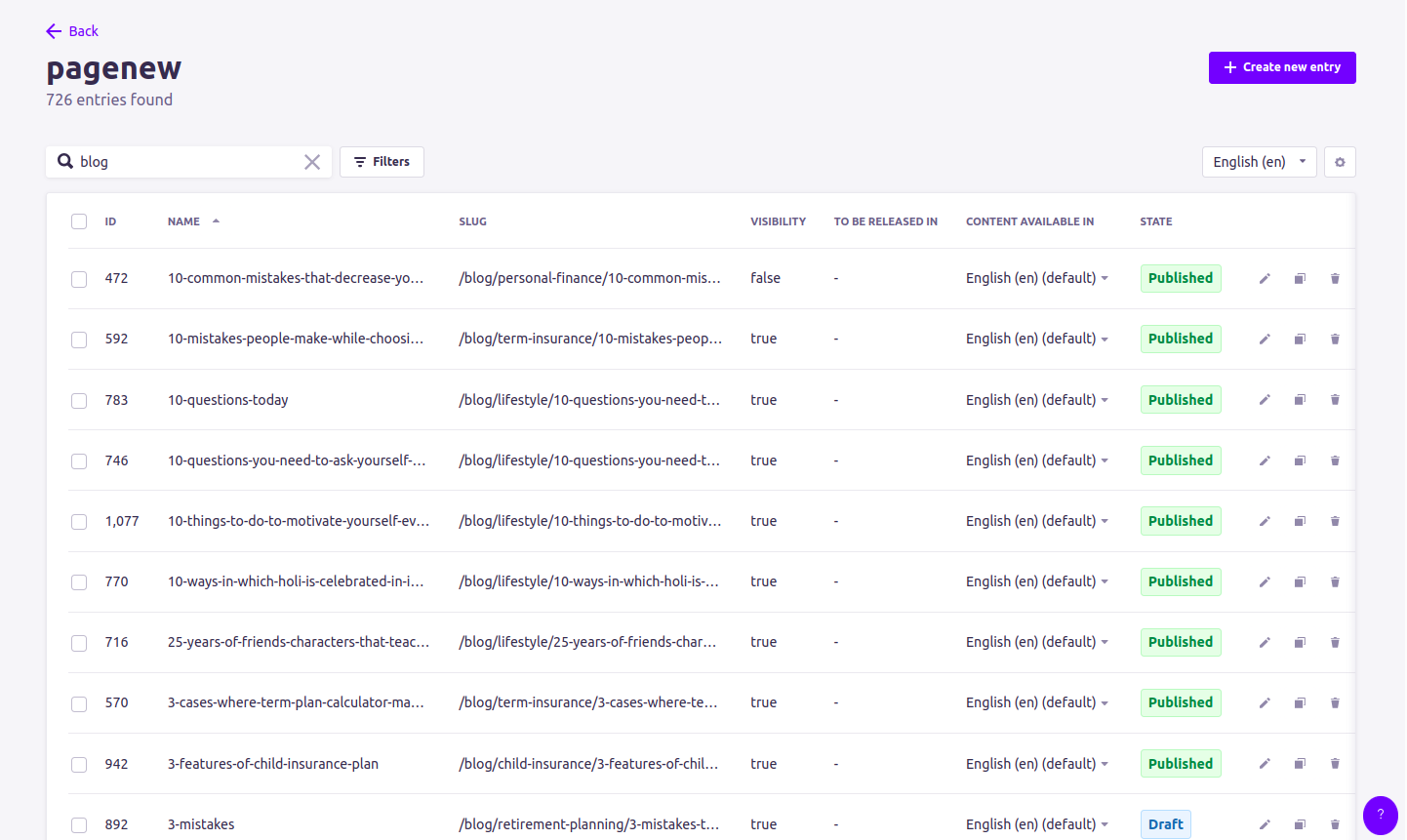
List of Pages
Here’s how Strapi V4 helped us bring this ambitious project to life.
- Scalable Media Management with AWS S3: Managing thousands of web pages means dealing with a vast number of images and assets. To handle this seamlessly, we integrated AWS S3 as the image upload provider in Strapi. This enabled us to:
- Offload storage to a robust cloud service.
- Ensure quick and reliable access to media files.
- Simplify content workflows for authors through direct uploads using Strapi’s intuitive interface.
Through S3 integration, our pages were lightweight and optimized with media delivery that ensured better load times for the end-user.
- Localization using i18n: Reaching Vernacular Audiences: Our audience spans across India and our content needed to be delivered in multiple languages. With Strapi’s i18n (Internationalization) plugin, localization of each page in multiple languages, including Hindi, Telugu, Tamil, and Kannada, was easier. Key benefits of i18n in our project:
- Ease of localization: The authors could create language-specific content directly within the Strapi interface.
- Single source of truth: A centralized structure for content ensured consistency across languages.
- Dynamic page generation: Used of localized content with Next.js enabled us to provide vernacular pages dynamically catering to a diverse user base.
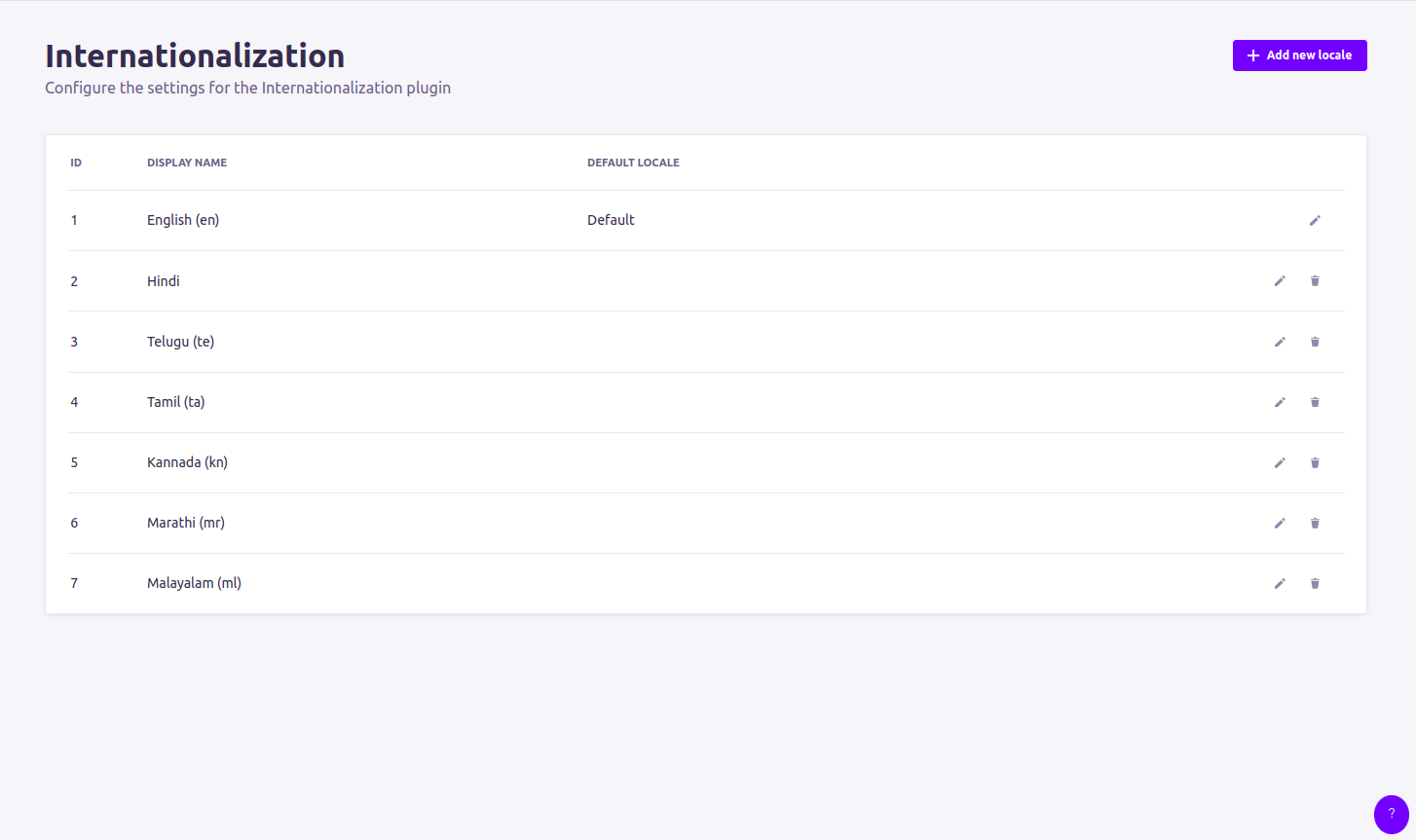
Localization-i18n
This focus on localization has improved user engagement as well as made our platform accessible to millions of users who are not native speakers.
- Modular and Reusable Components: To ensure uniformity, we developed the frontend part with reusable components and using dynamic zones from Strapi. Some of the important parts we used include the following:
-
- PageLayout:
-
- The PageLayout component allows authors to define and organize web pages intuitively. It acts as a structure that ensure consistency across the site while addressing various layout requirements
- Authors can drag and drop the components in these layouts directly in Strapi’s Interface. These configurations dynamically render on the frontend, giving real-time feedback.
- In Next.js, the layout is dynamically loaded and applied using a higher-order component. Here’s a snippet of how it is defined:
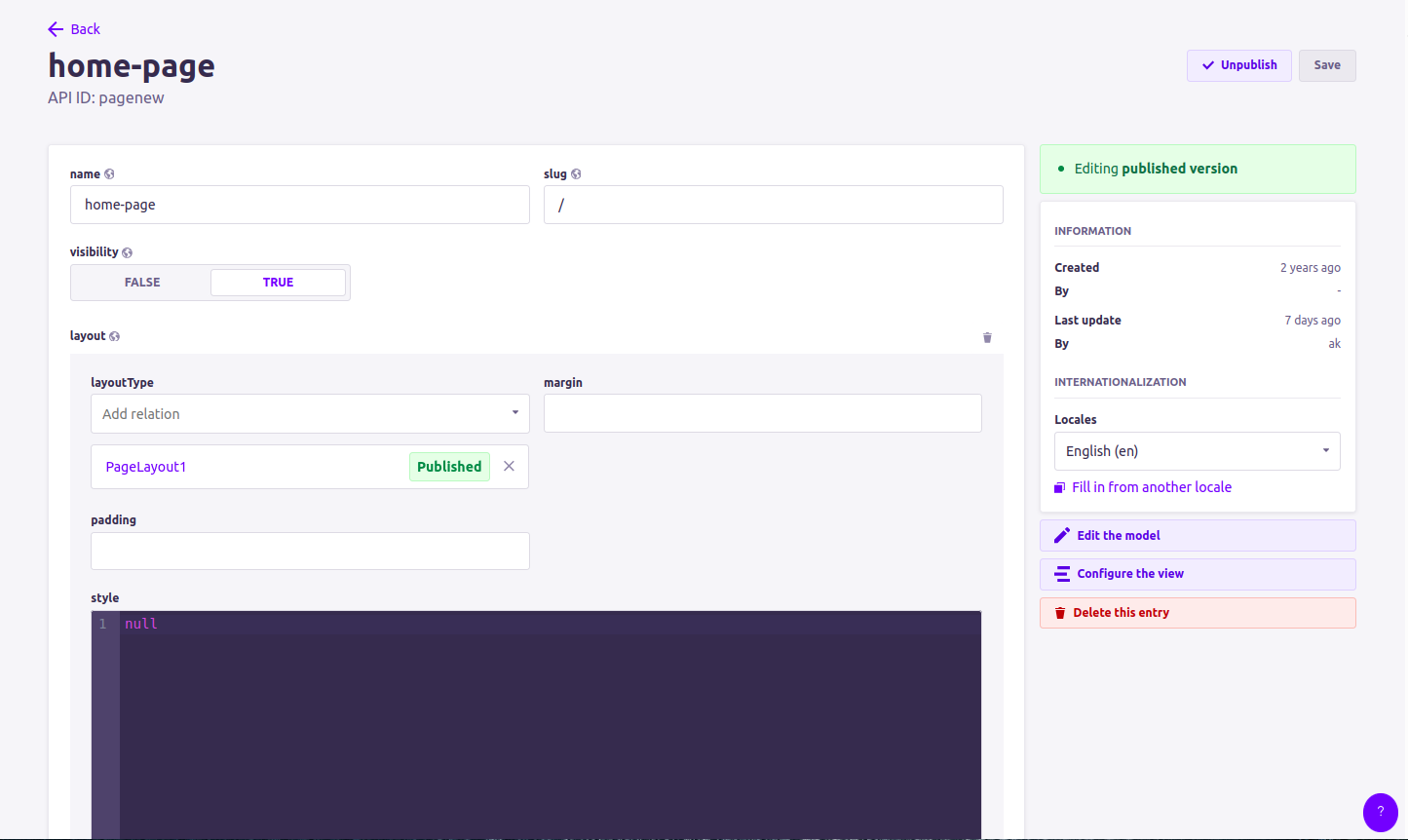
Page Layout
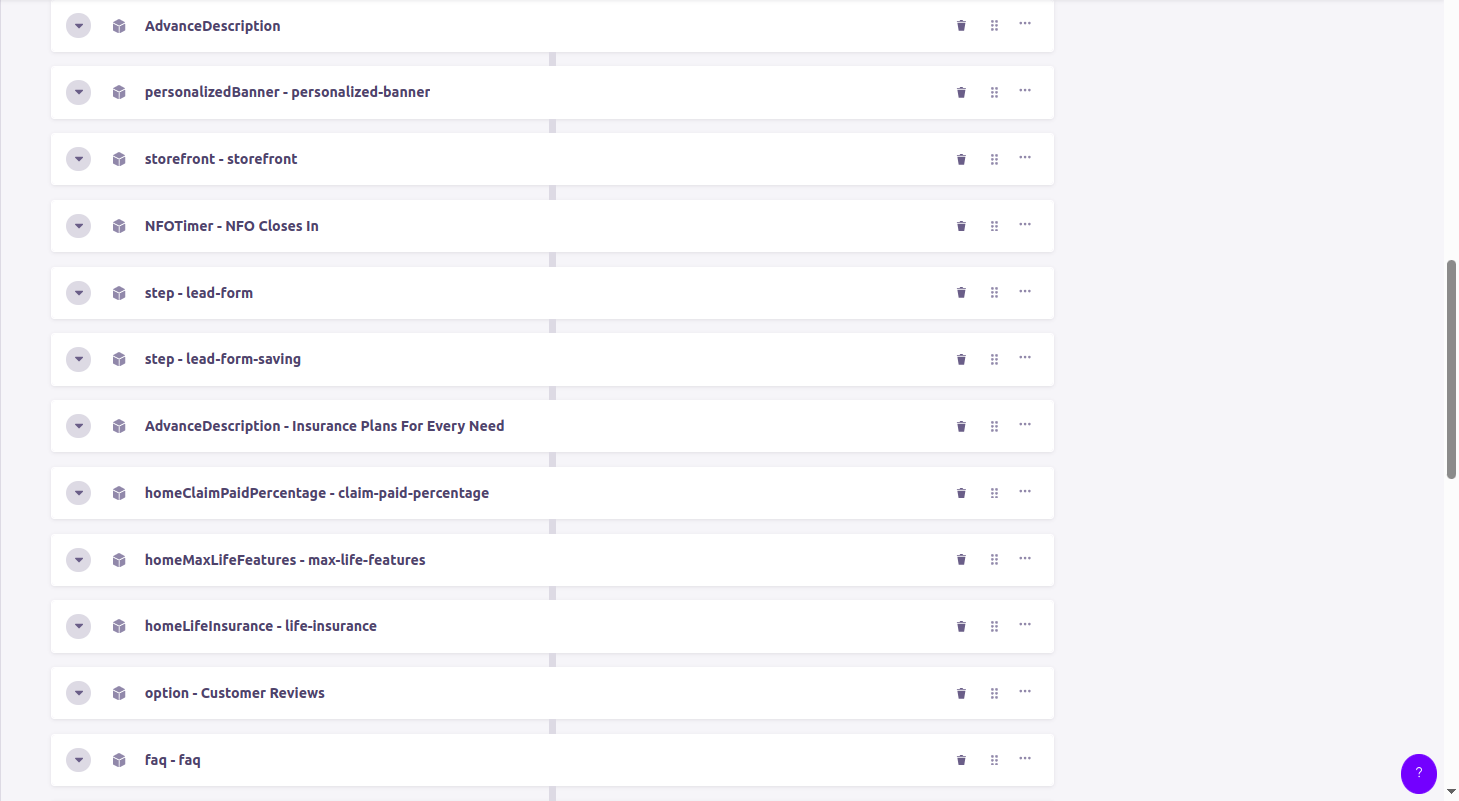
Page Components
const renderPageLayout = () => { if (typeof window !== 'undefined') { rewriteURL(); } const layoutMappings = { PageLayout1, PageLayout2, PageLayout3, PageLayoutWithContactDetails, }; const onValueChange = (value) => { console.debug('value', value); }; const Layout = layoutMappings[page?.layout?.layoutType?.name] || null; const components = util.transformByKey(appConfig?.themeConfig?.sections); if (page && page.sections && Array.isArray(page.sections)) page.sections.push(components?.contact); return Layout ? ( <Layout {...page} layout={page?.layout} onValueChange={onValueChange} pageTheme={pageTheme} /> ) : ( <h2>Page Layout is not defined...</h2> ); }; -
- Form Components: Provided capabilities for integrating forms to handle insurance journeys, checking CIBIL scores, among other user interaction requirements.
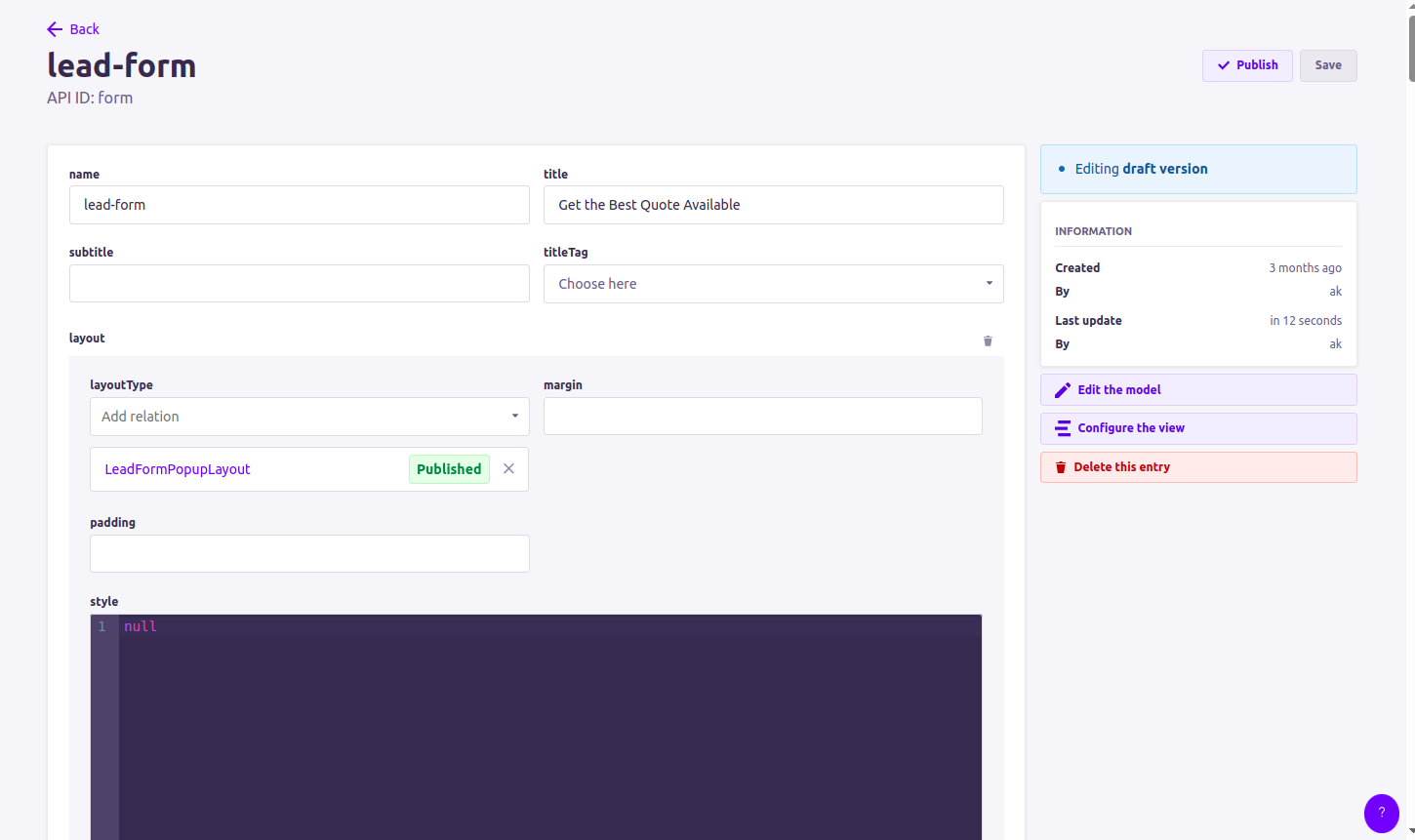
Form Layout

Form Components
- AdvanceDescription Components: The AdvanceDescription Component is a powerful, reusable module designed to display detailed and styled content blocks. Its flexibility allows it to be repurposed across multiple scenarios, significantly reducing redundancy and ensuring a consistent design language. The AdvancedDescription Component can act as a “container” for smaller components such as images, buttons, or embedded videos.
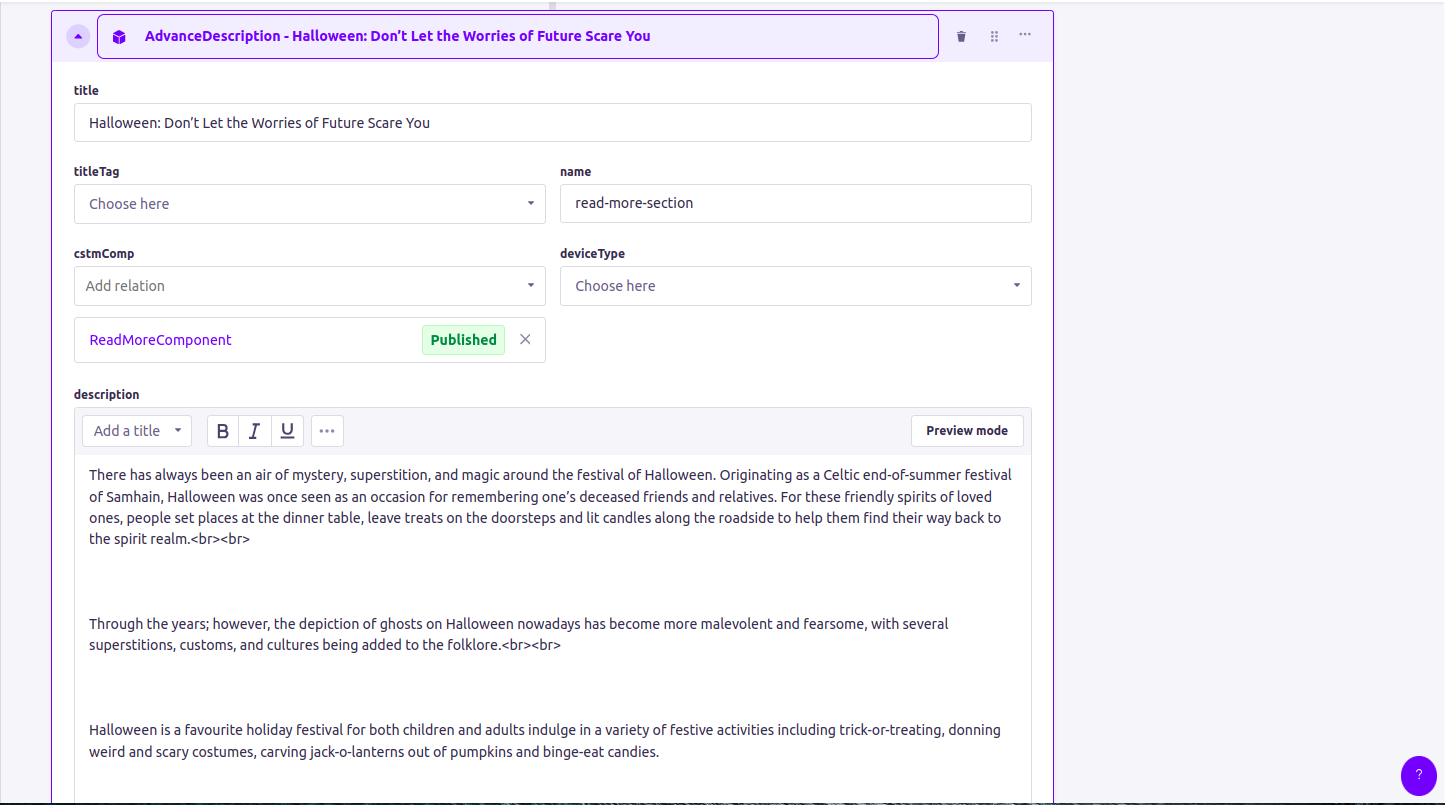
AdvanceDescription Component
- PageLayout:
These components, configured in Strapi and rendered via Next.js, provided unmatched flexibility. Authors could drag, drop, and reorder components to create unique pages without needing developer intervention.
-
- Connecting Next.js with Strapi: Integrating Next.js with Strapi enables us to build powerful, modern web applications that combine efficient front-end rendering with flexible content management. Here’s how this connection works and why it’s beneficial:
- API-Driven Content Delivery: Strapi, as a headless CMS, provides a REST or GraphQL API to serve content. Next.js fetches this data during the build process (for static generation) or at runtime (for server-side rendering). This setup ensures content is delivered dynamically and efficiently.
- Dynamic Rendering with Strapi:
- Server-Side Rendering (SSR): Next.js can request and render data from Strapi during each page request, ensuring users always see the most up-to-date content.
- Static Site Generation (SSG): Strapi content can be pre-fetched during build time, allowing for blazing-fast page loads with cached content.
- Benefits of Integration:
- Strapi handles content management and storage, while Next.js optimizes content delivery, making this combination ideal for scaling projects.
- We can choose when to fetch data—either on the server, client, or during build time—based on project needs.
This integration of Next.js and Strapi delivers a perfect balance of performance, scalability, and developer efficiency, making it a go-to solution for modern web development projects.
Challenges
- Page Hanging Issue Due to SQLite:
- Challenge: The application experienced significant delays or complete hangs when handling larger datasets because SQLite struggled with high-concurrency workloads.
- Solution: Migrated the database from SQLite to PostgreSQL. This improved query performance, enabled better indexing and concurrency, and supported more advanced features needed for scaling.
- Caching Mechanism Improvements:
- Challenge: High latency and increased load on backend servers due to repeated requests for static and frequently accessed dynamic data.
- Solution: Implemented caching strategies using CloudFront for content delivery and NGINX as a reverse proxy cache. These changes reduced latency and offloaded traffic from the application servers.
- Back Syncing Production Data:
- Challenge: Ensuring data consistency between the production environment and other systems, such as staging or analytics.
- Solution: Built and automated a robust back-syncing process using database dump and restore mechanisms, combined with incremental syncing scripts to avoid data loss or inconsistencies.
- Writing Common Utilities for Data Transformations:
- Challenge: Repeated code patterns for removing data attributes and restructuring arrays/objects, leading to redundancy and inconsistencies.
- Solution: Developed reusable utility functions for data transformation tasks. This reduced duplication, improved maintainability, and ensured a consistent approach to handling data structures across the codebase.
Outcomes
With Strapi V4, we successfully built a platform capable of managing over 1000+ authorable pages, serving both English and regional language audiences. Key outcomes included:
- Streamlined Authoring Process: Non-technical team members could easily create and manage content.
- Localized Content at Scale: Vernacular pages expanded our reach and improved user engagement.
- Dynamic Tools for Users: The calculators provided personalized and interactive experiences for users, enhancing engagement and satisfaction.
- Improved Performance: The combined power of Strapi, Amazon S3, and Next.js delivered fast-loading, SEO-optimized pages.
Conclusion
Strapi V4 turned out to be one of the core parts of our journey, allowing us to create a web platform that was scalable, customizable, and readied for localization. The connection with Amazon S3 and Next.js coordinated together seamlessly to allow smooth access and a rich experience for both the authors and end-users.
If you’re looking to build something content-rich, friendly for authors, highly performing, and with advanced interactivity, Strapi V4 is certainly worth a look. The teams focus on their creative and growth aspects while Strapi fully handles the technical complications of modern web development.

